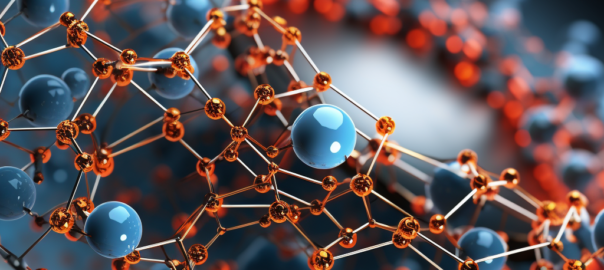In the quest for renewable energy solutions, researchers and scientists are continuously exploring innovative materials and technologies to transform the energy landscape. One such promising material is Argyrodites, a class of compounds with unique properties that have long intrigued scientists. Argyrodites, primarily composed of silver, germanium, and sulfur, offer a promising avenue for the development of high-performance energy storage devices due to their remarkable conductivity and ion-hosting capabilities.
However, fully understanding and harnessing the potential of Argyrodites have proven to be a formidable challenge due to the intricacies associated with their structure and behavior. This is where machine learning (ML) has emerged as an invaluable tool, aiding researchers in decoding the secrets of these fascinating compounds. By leveraging vast amounts of data and employing advanced ML models and techniques, scientists have been able to uncover crucial insights into the properties and behavior of Argyrodites, paving the way for revolutionary breakthroughs in the energy sector.
In this article, we will delve into the world of Argyrodites, exploring their chemical composition and properties, and the role of machine learning in unraveling their secrets. We will also discuss the breakthrough discoveries and the potential impact of these findings on the energy sector.
Contents
Understanding Argyrodites
2.1 Chemical Composition
Argyrodites are an intriguing group of minerals that mainly consist of silver, germanium, and sulfur. Their typical chemical formula is represented as Ag8GeS6. These compounds have long fascinated researchers due to their unique composition, which results in a set of remarkable properties that have yet to be fully harnessed.
2.2 Properties and Uses
Argyrodites are known for their excellent electrical conductivity, largely attributed to their complex crystal structures and the movement of ions within them. This makes them ideal candidates for applications in rechargeable batteries, supercapacitors, and fuel cells. The high ionic conductivity of Argyrodites is particularly promising for the development of solid-state batteries, which are safer and more efficient than their liquid electrolyte counterparts.
However, despite their potential, the use of Argyrodites in practical applications has been limited. One of the main reasons is the difficulty in understanding their intricate structures and behavior, especially during charge and discharge cycles. Researchers have yet to fully grasp how the ions move within the crystal lattice and how this affects the overall performance of energy storage devices.
In the following sections, we will discuss how machine learning has been employed to analyze the data on Argyrodites, the breakthrough discoveries that have been made, and the potential implications of these findings for the energy sector.
(Table 1: Properties and Uses of Argyrodites)
| Property | Description | Applications |
|---|---|---|
| Electrical conductivity | Ability to conduct electric current efficiently | Rechargeable batteries, supercapacitors, fuel cells |
| Ionic conductivity | Efficient movement of ions within the material | Solid-state batteries |
| Crystal structure | Complex arrangement of atoms in the material | Research and development of novel energy storage devices |
Table 1 summarizes the key properties of Argyrodites and their potential applications in the energy sector.
Now that we have a better understanding of Argyrodites and their properties, let’s explore how machine learning has been instrumental in unraveling their secrets.

Machine Learning and Argyrodites
3.1 Data Collection and Preparation
To unravel the mysteries of Argyrodites, researchers have accumulated vast amounts of data regarding their physical and chemical properties over the years. This data encompasses information on their crystal structure, ion transport, and conductivity, among other relevant characteristics. With this data in hand, machine learning models can be trained to make accurate predictions and provide insights into the behavior of these complex materials.
3.2 Machine Learning Models and Techniques
Various machine learning models, such as supervised learning, unsupervised learning, and reinforcement learning, have been employed to analyze the data on Argyrodites. These models utilize techniques like regression analysis, clustering, and neural networks to identify patterns and relationships within the data.
3.2.1 Supervised Learning
In supervised learning, models are trained on labeled data, which means that the input data is paired with the correct output. In the case of Argyrodites, supervised learning can be used to predict properties like conductivity or ion transport based on specific input features.
3.2.2 Unsupervised Learning
Unsupervised learning, on the other hand, involves training models on unlabeled data. These models can discover hidden patterns and relationships within the data, such as the optimal conditions for maximizing the conductivity of Argyrodites.
3.2.3 Reinforcement Learning
Reinforcement learning models learn by interacting with their environment and receiving feedback in the form of rewards or penalties. For example, these models can be used to simulate the behavior of Argyrodites under different conditions and optimize their performance based on the feedback received.
(Table 2: Machine Learning Models and Techniques for Argyrodites)
| Model | Description | Application |
|---|---|---|
| Supervised Learning | Trained on labeled data | Predicting conductivity or ion transport |
| Unsupervised Learning | Trained on unlabeled data | Discovering hidden patterns and relationships |
| Reinforcement Learning | Learn through interaction and feedback | Simulating and optimizing behavior under different conditions |
Table 2 summarizes the machine learning models and techniques used to analyze the data on Argyrodites and their respective applications.

Unraveling the Secrets
4.1 Breakthrough Discoveries
The application of machine learning to Argyrodites research has yielded some breakthrough discoveries. One of the most significant insights has been the revelation of the optimal conditions for maximizing the conductivity of these materials. Machine learning models have identified the factors that influence conductivity, such as temperature, pressure, and the presence of impurities. By optimizing these factors, researchers have been able to significantly enhance the performance of Argyrodites.
Additionally, machine learning models have shed light on the complex interactions between the ions and the crystal lattice that occur during charge and discharge cycles. These insights have been instrumental in understanding the behavior of Argyrodites and developing more efficient energy storage devices.
(Table 3: Breakthrough Discoveries in Argyrodites Research)
| Discovery | Impact | Application |
|---|---|---|
| Optimal conditions for conductivity | Enhanced performance | Improved energy storage devices |
| Interactions between ions and crystal lattice | Better understanding of behavior | More efficient charge and discharge cycles |
Table 3 summarizes the key breakthrough discoveries in Argyrodites research and their implications.
4.2 Practical Implications
Understanding the secrets of Argyrodites opens up new possibilities for the development of high-performance energy storage devices. By optimizing the properties of these materials, researchers can design batteries with higher energy density, faster charging times, and longer lifespan. This has the potential to revolutionize the energy sector, enabling more efficient storage and utilization of renewable energy sources.
Furthermore, the insights gained from machine learning models have practical implications for the design and manufacturing of Argyrodites-based devices. Researchers can now fine-tune the composition and processing of these materials to achieve the desired properties and performance. This has the potential to accelerate the commercialization of Argyrodites-based technologies and their widespread adoption in the energy sector.
Impacts on the Energy Sector
5.1 Renewable Energy Sources
The breakthroughs in Argyrodites research have significant implications for renewable energy sources such as solar and wind power. The improved energy storage capabilities offered by Argyrodites-based devices can help overcome the intermittent nature of these energy sources. By storing excess energy during periods of high production and releasing it during times of low production, these devices can help stabilize the energy supply and reduce the reliance on fossil fuels.
(Table 4: Impacts on Renewable Energy Sources)
| Renewable Energy Source | Benefit |
|---|---|
| Solar Power | Storing excess energy during sunny days and releasing it during cloudy days or at night |
| Wind Power | Storing excess energy during windy periods and releasing it during calm periods |
Table 4 summarizes the benefits of improved energy storage for various renewable energy sources.
5.2 Energy Storage and Transmission
Argyrodites-based energy storage devices can play a crucial role in enhancing the stability and reliability of the energy grid. By storing excess energy during periods of low demand and releasing it during peak times, these devices can help balance the supply and demand of electricity. This can reduce the need for fossil fuel-based power plants, which are often used to meet peak demand, and decrease the environmental impact of electricity production.
Moreover, the improved energy storage capabilities can also benefit the transmission of electricity. By storing energy locally, it is possible to reduce the need for long-distance transmission and the associated energy losses. This can increase the overall efficiency of the energy grid and lower the cost of electricity.
(Table 5: Impacts on Energy Storage and Transmission)
| Impact | Benefit |
|---|---|
| Balancing Supply and Demand | Reducing the need for fossil fuel-based power plants and decreasing the environmental impact |
| Reducing Energy Transmission | Increasing the overall efficiency of the energy grid and lowering the cost of electricity |
Table 5 summarizes the benefits of improved energy storage and transmission.
Future Developments and Conclusion
The groundbreaking research on Argyrodites, enabled by the application of machine learning, has the potential to redefine the future of energy storage technologies. By harnessing the unique properties of Argyrodites, we can develop more efficient and reliable energy storage devices, paving the way for a cleaner and more sustainable energy sector.
However, there is still much to be explored in the world of Argyrodites. Ongoing research aims to further optimize their properties, improve their scalability for commercial production, and expand their applications beyond energy storage. We can expect more breakthroughs in the coming years as researchers continue to unravel the mysteries of these fascinating compounds.
In conclusion, the insights gained from machine learning have been instrumental in advancing our understanding of Argyrodites and their potential applications in the energy sector. By optimizing their properties and harnessing their potential, we can take a significant step towards a more sustainable and efficient energy future.

FAQs
Q1: What are Argyrodites?
A1: Argyrodites are minerals primarily composed of silver, germanium, and sulfur. Their unique chemical composition and properties make them promising candidates for high-performance energy storage devices.
Q2: Why are Argyrodites significant for energy storage technologies?
A2: Argyrodites possess excellent electrical and ionic conductivity, making them ideal for applications in rechargeable batteries, supercapacitors, and fuel cells. They are particularly promising for solid-state batteries, which are more efficient and safer than liquid electrolyte counterparts.
Q3: How has machine learning helped in Argyrodites research?
A3: Machine learning has been instrumental in analyzing vast amounts of data related to the physical and chemical properties of Argyrodites. By employing advanced machine learning models and techniques, researchers have uncovered crucial insights into the optimal conditions for maximizing conductivity and the interactions between ions and crystal lattice during charge and discharge cycles.
Q4: What are some of the breakthrough discoveries in Argyrodites research?
A4: One of the significant breakthroughs has been the identification of the optimal conditions for maximizing the conductivity of Argyrodites. Machine learning models have revealed the factors that influence conductivity, such as temperature, pressure, and impurities. Additionally, insights into the complex interactions between the ions and crystal lattice have been instrumental in understanding their behavior and developing more efficient energy storage devices.
Q5: How do the breakthroughs in Argyrodites research impact the energy sector?
A5: The improved energy storage capabilities offered by Argyrodites-based devices can help overcome the intermittent nature of renewable energy sources, such as solar and wind power. They can also enhance the stability and reliability of the energy grid by balancing supply and demand and reducing the need for long-distance energy transmission. These advancements have the potential to revolutionize the energy sector by enabling more efficient storage and utilization of renewable energy sources.
Q6: What are the future developments expected in Argyrodites research?
A6: Future research on Argyrodites aims to further optimize their properties, improve scalability for commercial production, and explore applications beyond energy storage. We can expect more breakthroughs in the coming years as researchers continue to investigate these fascinating compounds and their potential uses.










